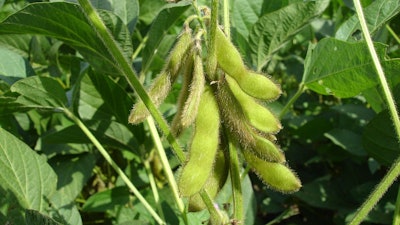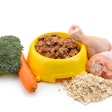
The United Soybean Board (USB) has approved a $173.8 million budget for the fiscal year 2025, focusing on research, promotion, and education to boost the demand for U.S. soybeans. The budget was approved by the 77 farmer-leaders on the board during their summer meeting, held July 8-11 and hosted by the Maryland Soybean Board and the Mid-Atlantic Soybean Association.
“With wet conditions in the north and dry conditions in the south, growing soybeans has been challenging for many across the nation,” said Steve Reinhard, USB chair and farmer from Ohio. “One of the benefits of our checkoff is that farmer-led investments continually focus on building a more resilient soybean to withstand weather conditions, pests, and weed pressure while also prioritizing demand creation.”
The budget supports various strategic areas, including Innovation & Technology, Health & Nutrition, and Infrastructure & Connectivity. Each area focuses on both supply and demand investments to enhance the resilience and marketability of U.S. soy.
Innovation and technology
- Supply: “We’re investing in research to speed up the process to get biotech soybeans to the market,” said Kurt Maurath, I&T supply work group lead and Kansas farmer. The research aims to combat pests, weeds, and diseases and expand high oleic soybeans.
- Demand: Neal Bredehoeft, I&T demand work group lead and Missouri farmer, highlighted efforts to expand soybean oil use in sustainable aviation fuel and other applications, noting the environmental benefits of soy-based firefighting foam and carbon black research for renewable tire particles.
Health and nutrition
- Supply: Laurie Isley, H&N supply work group lead and Michigan farmer, emphasized a wider-lens approach to managing pests, integrating research across various networks to determine the best management practices.
- Demand: Dawn Scheier, H&N demand work group lead and South Dakota farmer, noted the role of soy meal in animal agriculture, highlighting its antiviral and anti-inflammatory benefits and efficient conversion rates.
Infrastructure and connectivity
- Supply: Robb Ewoldt, I&C supply work group lead and Iowa farmer, mentioned the potential of using artificial intelligence for soybean grading to reduce human error and enhance profitability.
- Demand: Tom Frisch, I&C demand work group lead and Minnesota farmer, discussed the development of a soy-based chemistry curriculum and the commercialization of soy-based lubricants and hydraulic oils.
Communication and education committee
Matt Gast, chair of the Communication & Education Committee and a North Dakota farmer, highlighted the importance of promoting agriculture through hands-on STEM activities and diversifying soy uses to elevate soy as a sustainable solution.
Export promotion
April Hemmes, Demand Action Team chair and Iowa farmer, emphasized the importance of finding uses for soybean meal, supporting global livestock production, and exporting value-added poultry products and red meat to boost U.S. agriculture and the economy.
“We have been hard at work these last several months in discussions with our farmer-leaders to identify our priorities for each work group for FY25,” said Ed Lammers, USB Vice Chair and Nebraska farmer. “As demand continues to grow, our checkoff dollars continue to work for all U.S. soybean farmers.”
The USB’s strategic investments aim to support soybean farmers by enhancing resilience, expanding markets, and promoting sustainable practices, ensuring continued growth and profitability in the soybean industry.
















